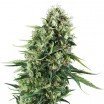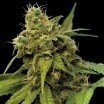Don't have an account?
Register NowYou have to add to cart at least 5 bottles or any program to make checkout.
- BlogThe Origin And History Of Cannabis
The Origin And History Of Cannabis
Published: October 12th, 2018
Categories:
Cannabis Info
If we look back on the history of the cannabis plant, it reveals much about the history of humanity itself. Even in recent times, there have been so many significant developments, reflecting a growing acceptance of the plant around the world. There is still some ways to go, but at least we can look back on how far we have come.
In a way, following the legacy of a culturally significant plant can reveal a lot about the societies who used it. This is especially true of cannabis, which contains chemicals corresponding to so-called cannabinoid receptors in the human body. The serendipity of this connection has led to some spiritual, religious, and recreational traditions incorporating cannabis use. However heavenly cannabis feels, let's look back on its rich journey.
CANNABIS'S ORIGIN IN ASIA
At some point before the recording of human history, the cannabis plant bloomed in the wild. It may possibly have emerged in nutrient-rich dumping sites of hunter-gatherers. The farthest back in time we can confirm evidence of cannabis is roughly 11–12,000 years ago. It is likely to have first emerged in the mountains of Central Asia, particularly around Mongolia and southern Siberia. There were two distinct varieties that were eventually cultivated by humans, who used them for vastly different purposes.
The plant that would become classified as “Cannabis sativa” offered humans a unique psychoactive buzz. The plant now classified as “Cannabis sativa L.”, however, is commonly known as hemp, a non-psychoactive crop with a vast array of industrial uses from making oil, rope, and paper to building materials for cars and buildings.
It is difficult to pin down when exactly humans discover a use for psychoactive plants. This is particularly true when it comes to the first man or woman who decided to smoke some cannabis to see what would happen. If not for such a pioneering spirit, would the wonders of these two plants have been kept a secret from humanity? There were later discovered two more psychoactive varieties of cannabis; Cannabis indica with its soothing body high, and Cannabis ruderalis with its more modest effects and small stature. But in order to really delve into the characteristics of each variety, we must first understand how the plant spread from mountainous Central Asia to the rest of the world.
WEED SPREADING TO CIVILISATIONS

If you haven't seen Bill Wurtz "history of the entire world, I guess", we recommend watching it stoned. It gives an astoundingly quick overview of different civilisations rising and falling throughout history. Civilisations with agriculture, commerce, and basic technology began to emerge around what Wurtz calls "dank river valleys". These drove trade and exchange of different commodities between civilisations.
Around ten thousand years pass from the discovery of cannabis in Central Asia. During this time, word spread and seeds spread. The earliest we can confirm a written record of cannabis use is the Emperor Shen Neng of China in 2737 BC.
There are records that have emerged arguing that cannabis has been a folk remedy for some thousands of years. It must have caught on with travellers bringing seeds on their journeys home. By around 2000 BC, China, Japan, India, the Middle East, Russia, and Eastern Europe were all growing the plant for one of two purposes; psychoactive cannabis or hemp material. At some point between 2000–1400 BC, the Vedas were written. These are among the holy texts of the world's oldest major religion, Hinduism. In the Atharva Veda, cannabis is mentioned. Some sects of Hinduism drink a cannabis-infused milk called bhang in honour of the god Shiva. Some traditions depict Shiva eating cannabis; others believe his tears watered the Earth and cannabis plants bloomed forth.
EARLY CANNABIS HISTORY HIGHLIGHTS
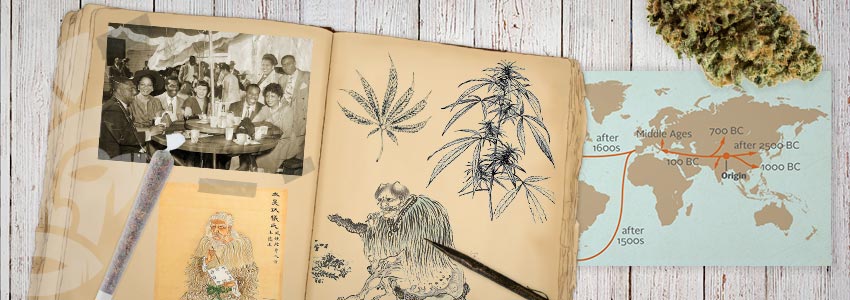
In 1550 BC, the Ebers Papyrus of Ancient Egypt described medical cannabis use. Over the next thousand years, more and more cultures were exposed to it. In Ancient Greece, Herodotus wrote about it in the 5th century BC. He described a cannabis-infused steam bath he had witnessed Scythians take on his journeys through the Middle East. Herodotus saw the Scythians become euphoric and frenzied upon breathing in the steam. It was in 100 BC that the Chinese began documenting the psychoactive impact of cannabis.
The next millennium saw the Islamic expansion spread cannabis through North Africa. The following millennium saw cannabis spread down East Africa, as well as throughout Europe. This was driven largely by trade with the Arab world and the wide range of applications for cannabis and hemp. Hemp rope was suitably durable for the longer and longer journeys that Europeans were making as they sailed the world. As Europeans began to invade and colonise other parts of the world, they often brought hemp with them, encouraging its cultivation. Striking to think, given that modern times have seen Western countries clinging to repressive cannabis laws.
MARIJUANA SPREADING TO COLONIES
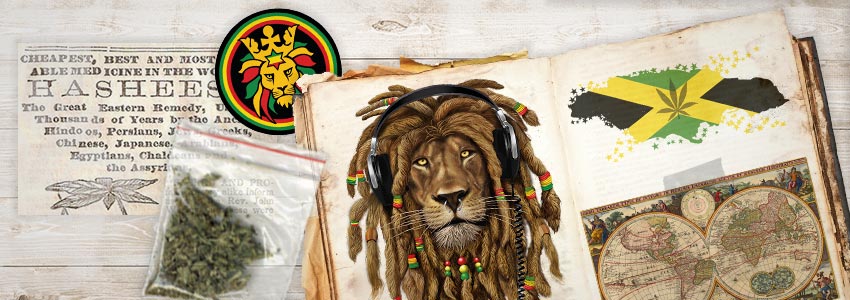
As empires seized the wealth and forced labour of other countries, they built their fortune on trade. As they began invading more places, distant parts of the world were finally being connected. Among the many ugly legacies of colonialism, this was achieved by transporting slaves, and later, indentured labourers from one continent to another. Much of the Indian Diaspora is the result of a practice from when the British Empire occupied India. Labourers were sent from India, often to South Africa and Jamaica. Many brought cannabis with them and introduced it to the locals.
Southern Africans were already familiar with the crop since at least 1400 AD. Jamaicans, however, had whole new wonders before them with the introduction of cannabis. Their term “ganja” emerged from the original Hindi word, which itself is derived from the Sanskrit word “ganjika”. Jamaicans would eventually develop their own religious tradition that incorporated cannabis. The Rastafari religion emerged there in the 20th century, with cannabis being included as a sacrament in contemplative ceremonies. Rastafari iconography is widely associated with cannabis in modern Western culture.
This last century has actually been quite dramatic for cannabis. The United States provides a comprehensive example of what most countries experienced throughout the 20th century.
CANNABIS COMES TO THE UNITED STATES
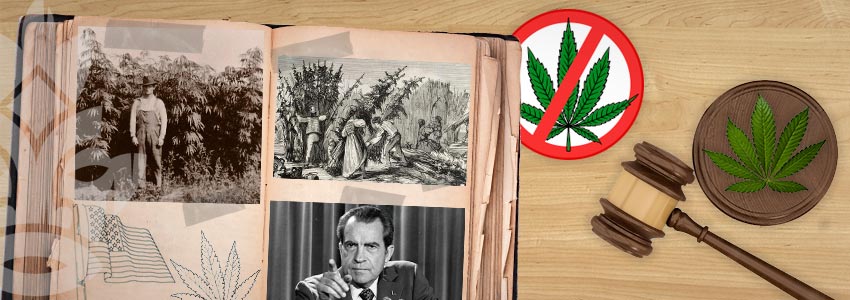
The British Empire banned cannabis and even hemp production in Jamaica in 1913 and in South Africa in 1922. Even as Britain's Empire fell apart from Irish independence onwards, it fell in line with an international trend. Cannabis was now being seen as dangerous and in need of control like opium and other dangerous drugs. The 1925 International Opium Convention specifically forbade exportation of "Indian hemp" to nations that had banned it. As the years went on, more and more international agreements saw countries clamping down on cannabis production. The 1920s also saw the United States' iconically unsuccessful attempt at alcohol prohibition. They went back on that, but continued to press ahead with aggressive targeting of what they eventually called “marijuana”.
Revelations of White House policy, particularly under President Richard Nixon, show how much cannabis was targeted for political convenience. Since its use was associated with ethnic minorities or those with counterculture politics, it was easy to arrest these populations on drug charges. Indeed, this mindset continued to permeate the American justice system, particularly with regard to racial disparities in marijuana offence prosecutions. In spite of such painful consequences of the War on Drugs, American cultivators continued to develop the plant, particularly along the more culturally-tolerant West Coast. Acceptance was more common there, but soon the whole United States would appear to turn against the criminalisation of marijuana.
MARIJUANA MOVES TOWARDS LEGALIZATION
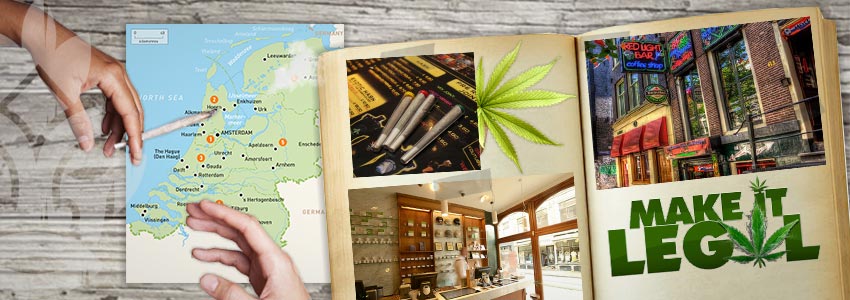
The United States first had cannabis introduced from across the Atlantic Ocean. These days, American cultivators give the world some of the best strains, and the world has in turn inspired America to be bolder in pursuing the normalisation of cannabis.
Similarly, the Netherlands famously found flexibility in international drug conventions. During the 1970s, they instructed the police to ignore coffeeshops selling cannabis so long as safety guidelines were followed. This led to a boom of coffeeshops throughout Amsterdam and other Dutch cities, gradually reined in by updated regulations. Dutch society did not fall apart after allowing people a space to buy a substance individuals had been using for millennia. It has in fact seen huge improvements in how it tackles drug use in general.
Different countries started experimenting with more liberal cannabis laws. The 2000s saw Spanish cannabis clubs vindicated by a loophole in EU law. They were allowed to operate as long they facilitated only non-profit personal use and cultivation of cannabis plants. This system required adults to join members-only cannabis clubs. As different decriminalisation models emerged, the 2010s finally saw a wave of legalization. Uruguay came first, establishing a cannabis club system. This year, Canada will legalize the cultivation and retail of cannabis, in defiance of international restrictions.
The United States has had its own revolution, with states legalizing medical use since the mid-’90s. Colorado was the first state to legalize and enact the use, sale, and production of recreational marijuana in 2014. Eight other states and the capital Washington DC have since followed. Even though this contradicts the federal prohibition of cannabis, these new markets are flourishing. Perhaps with enough places turning in favour of cannabis normalisation, there will be a revision of outdated international agreements. This would be good news for everyone who needs medical cannabis, and for the continuation of more in-depth research.
MODERN MEDICAL MARIJUANA

European doctors like William Brooke O'Shaughnessy and Jacques-Joseph Moreau were introducing Westerners to the science behind cannabis in the 19th century. They recorded a number of medical impacts stemming from cannabis. Interestingly, it began to be widely used to treat a variety of ailments, even after being driven underground in the 20th century.
During that time, the newly-founded nation of Israel was researching the chemicals and very molecular structure of the cannabis plant. A team of Israeli scientists led by Dr. Raphael Mechoulam uncovered total synthesis of cannabinoids like THC and CBD. They also did much work on endocannabinoids and cannabinoid receptors in the human body. This group of Israelis have contributed much to our understanding of the various conditions cannabis has potential to treat. But which country really loves cannabis the most?






